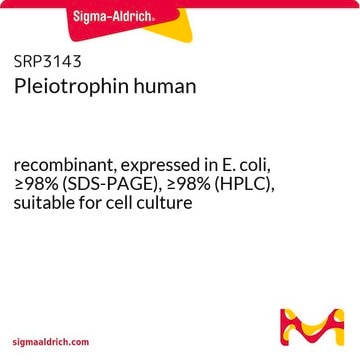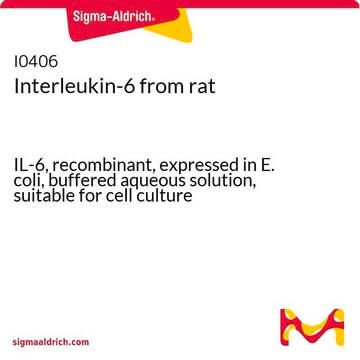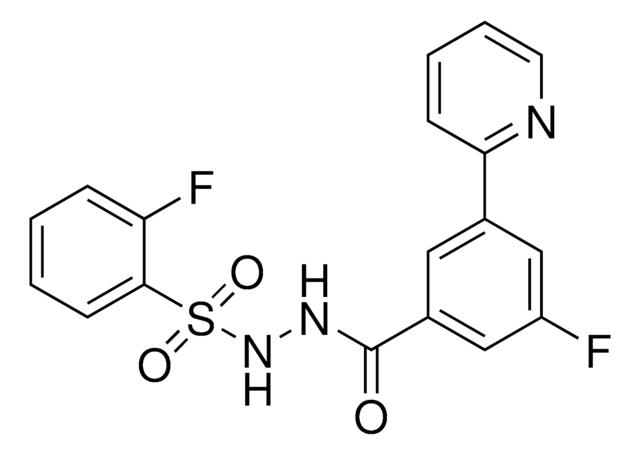SRP2029
Sp1 GC-box binding protein human
≥70% (SDS-PAGE)
Sign Into View Organizational & Contract Pricing
All Photos(1)
About This Item
UNSPSC Code:
12352202
NACRES:
NA.26
Recommended Products
biological source
human
Assay
≥70% (SDS-PAGE)
form
frozen liquid
mol wt
~80.7 kDa
packaging
pkg of 2 μg
storage condition
avoid repeated freeze/thaw cycles
concentration
100 μg/mL
technique(s)
electrophoretic mobility shift assay: suitable
color
clear colorless
NCBI accession no.
UniProt accession no.
shipped in
dry ice
storage temp.
−70°C
Gene Information
human ... SP1(6667)
General description
Specific protein 1 (Sp1) is a transcription regulator that has a transactivation domain at the N-terminus and a DNA-binding domain at the C-terminus, that contain three zinc fingers (ZF). This transcription factor selectively binds to the hexanucleotide sequence, GGGCGG (GC-box). It belongs to transcription factor family and is located on human chromosome 12q13.
Biochem/physiol Actions
Sp1 was first detected in HeLa cells on the basis of its ability to activate the SV40 early promoter transcription. Subsequently it was shown to recognize and bind selectively to a GC-rich consensus sequence (GC-box: GGGCGG or CACCC) that presents in the promoter of several important cellular genes, including SV40 early, HIV-1, PDGF-B etc. Sp1 was the first transcription factor to be cloned. Analysis of structure and function has revealed that Sp1 can be separated into discrete functional domains. The DNA-binding domain consists of three zinc fingers that specifically bind to the GC-box element. Sp1 contains at least four separate transcriptional activation domains. Two of these domains are glutamine-rich, a well-characterized motif found in several other transcription factors. In addition to transcription, Sp1 function has been linked to cell growth, cancer, Huntington disease and other disorders through transcriptional regulation or specific protein-protein interactions. The function of Sp1 can be regulated by phosphorylation and glycosylation.
Specific protein 1 (Sp1) controls the up- and down-regulation of hCtr1 (human high-affinity copper transporter 1). It controls the expression of several genes that participates in differentiation, cell cycle and oncogenesis.It has the ability to bind GC/GT-rich promoter elements with the help of C(2)H(2)-type zinc fingers at the C-terminal domains.
Physical form
Clear and colorless frozen liquid solution
Preparation Note
Use a manual defrost freezer and avoid repeated freeze-thaw cycles. While working, please keep sample on ice.
Storage Class Code
10 - Combustible liquids
WGK
WGK 1
Flash Point(F)
Not applicable
Flash Point(C)
Not applicable
Certificates of Analysis (COA)
Search for Certificates of Analysis (COA) by entering the products Lot/Batch Number. Lot and Batch Numbers can be found on a product’s label following the words ‘Lot’ or ‘Batch’.
Already Own This Product?
Find documentation for the products that you have recently purchased in the Document Library.
New Frontiers in the Study of Gene Functions (2013)
New insights into the multiple functions of Spl, a ubiquitous transcription factor.
Parnaik V K
Current Science, 76(2), 166-172 (1999)
An insight into the phylogenetic history of HOX linked gene families in vertebrates
Abbasi AA and Grzeschik KH
BMC Evolutionary Biology (2007)
Effects of Cu(II) and cisplatin on the stability of Specific protein 1 (Sp1)-DNA binding: Insights into the regulation of copper homeostasis and platinum drug transport
Yan D, et al.
Journal of Inorganic Biochemistry, 161, 37-39 (2016)
Sp1-mediated transcriptional activation of the human Pi class glutathione S-transferase promoter.
Moffat GJ et al
The Journal of Biological Chemistry, 271(2), 1054-1060 (1996)
Our team of scientists has experience in all areas of research including Life Science, Material Science, Chemical Synthesis, Chromatography, Analytical and many others.
Contact Technical Service







